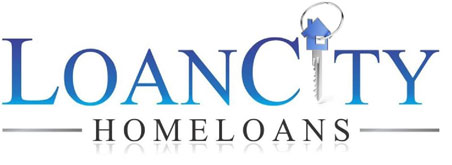With increasing home values more homeowners are becoming eligible to refinance their home mortgage. However, before you jump into refinancing your home, make sure you educate yourself on some of the most common mortgage myths.
Mortgage Myth # 1 – You can find an accurate total cost of your mortgage by using the interest rate 
The best way to find the cost of your mortgage is through the annual percentage rate. The APR includes your points, interest rate, and other fees. Just about every applicable fee falls under the umbrella of an APR except your homeowner’s insurance policy. Many lenders advertise based on an interest rate, which is misleading because it’s the APR that better represents what you’ll be paying, not your interest rate. When you are comparing different mortgages, make sure to study the APR.
Mortgage Myth # 2 – Mortgage rates are revealed and made official once a day
Mortgage interest rates can fluctuate throughout the day, much like a stock or bond does. A mortgage is a security sometimes there is large movements in the markets that will cause changes to mortgage rates. It is recommended to get multiple loan quotes because frequent changes in the lender’s supply as well as market rates can turn a great deal into a bad one.
Mortgage Myth # 3 – The law requires all lenders to charge the same fees for quoting services
Simply put, there is no regulation or law that standardizes the fees lenders charge. This isn’t necessarily a bad thing: Lenders often waive fees to gain a leg up on their competitors. When looking at your Good Faith Estimate review the Lenders or Mortgage Brokers origination charges. This will be found in Box A of your GFE, and include all fees being charged to the borrower. Part of smart shopping includes comparing these types of fees.
Mortgage Myth # 4 – Whoever pre-approves me must also provide my mortgage
You don’t have to get a mortgage with the company that pre-approves you. It is only a handshake agreement that states how large of a home loan can be covered by the lender. It is recommended to get multiple loan quotes before going on to the next step.
Mortgage Myth # 5 – Having a checking account with the bank ensures the most favorable rates
Sure, it’s possible to receive a discount or a “customer-appreciative” rate on your mortgage if you bank with the lender. Banks are in it to make money too, so it’s very unlikely. If you’re concerned about getting the best possible rates, seek multiple quotes, and choose the best deal you are offered.
Mortgage Myth # 6 – Lenders will consider yours and your spouse’s credit scores equally when determining an interest rate
Better hope your spouse has good credit: Banks will consider multiple credit reports from both borrowers, choose the median score for each, and then take the lower score of the two. Ultimately, whoever has the weaker credit score on average will affect the interest rates more.
Mortgage Myth # 7 – Your down payment must be higher than 5 percent to secure a home loan
You can actually secure a home loan with as little as a 3.5 percent down payment. The Federal Housing Administration provides assistance to those who need help securing a home loan. So do not get discouraged!
Mortgage Myth #8 – Short sales or foreclosures require you to wait at least 7 years before securing another home loan
If you buy a home after a short sale, depending on the down payment and loan type you choose, you’ll need to wait about 2 to four years. A foreclosure requires you to wait 3 to 7 years before being able to secure another home loan. It takes a while to rebuild your credit score to a level that allows lenders to loan you money.
Mortgage Myth # 9 – If you can’t keep up with your current home loan, you cannot refinance
Millions of homeowners who are having trouble with their current mortgage can refinance using a special government program. The FHA Streamline Refinance has been changed to help homeowners with loans that are insured by the Federal Housing Administration. The Home Affordable Refinance Program is available to assist homeowners with loans supported by Fannie Mae or Freddie Mac. Each program helps homeowners refinance into a lower interest rate, thus lowering mortgage payments without putting additional stress on the homeowner. There are some useful tips for homeowners who fall behind on their mortgage.
First off, don’t ignore the problem. The higher the expenses that pile up the harder it is to get help with your loan, unnecessarily increasing the chances that you lose your house.
Be pro-active and get in touch with your lender as soon as you find yourself with problems paying the mortgage. They don’t want to take your house any more than you want to lose it; they provide options to assist mortgage holders through tough times.
Make sure you’re aware of your rights. Gather all documents related to your loan and go over them. Make sure that any actions your lender makes are within the terms of service agreed upon with the mortgage.
Other than obvious changes like limited spending or liquidating assets, the last thing you need to know is to avoid “foreclosure prevention institutions.” You don’t need to waste money for foreclosure prevention advice (which will be things like “spend less”). Some companies may contact you saying they can negotiate a better deal with your lender. Even if it’s legitimate, it doesn’t mean there isn’t some large fee involved.
Mortgage Myth # 10 – Homeowners can refinance once a year
If one has a conforming loan backed by Freddie Mac or Fannie Mae, they can refinance as many times as they would like providing that they do not take any equity out. As long as the homeowner is refinancing to lower the interest rate or length of their mortgage, they can refinance as many times as frequently as they like. The best thing to do is waiting until the difference between the current interest rate and the interest rate you’ll receive through refinancing is enough that it would save the homeowner money each month to cover the cost of refinancing in three years. The length of time that a homeowner plans on living in the home should be taken under consideration. The benefits of refinancing grow the longer the homeowner owns the home. The best way to measure all these calculations is with a refinance calculator. Using a refinance calculator can help you decide when you should refinance, and how long it would take to break even given the rates provided. The real estate market is starting to show signs of improvement. It’s a great idea to re-acquaint you with the ins and outs of mortgages!
We are here to educate and set home mortgage borrowers straight. Know the common mortgage myths, use our refinance calculator and know when to refinance.


 Twitter
Twitter Email
Email Facebook
Facebook Linkedin
Linkedin Google +
Google +